Painted Desert and Petrified Forest
May 31, 2011
Blue Mesa
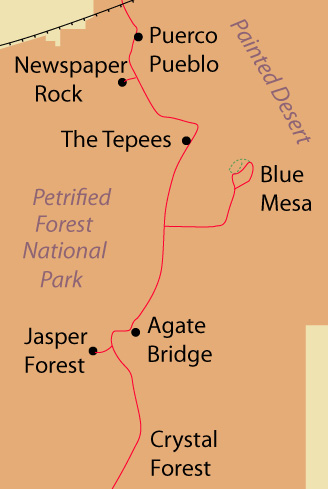 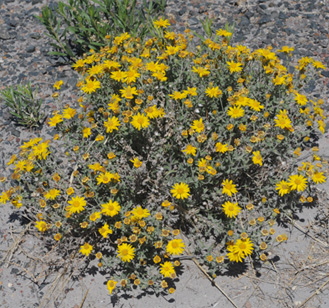 | 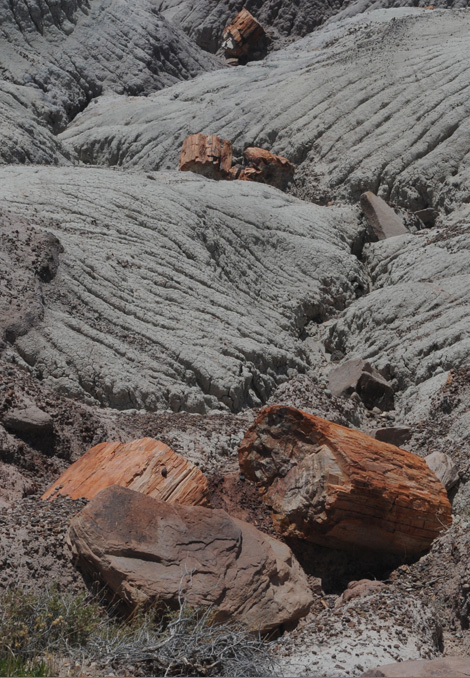 Continuing our drive through Petrified Forest National Park, we entered the short side road to Blue Mesa. This was the first time we saw sections of petrified logs. The formations were similar to the closeby areas of the Tepees. |
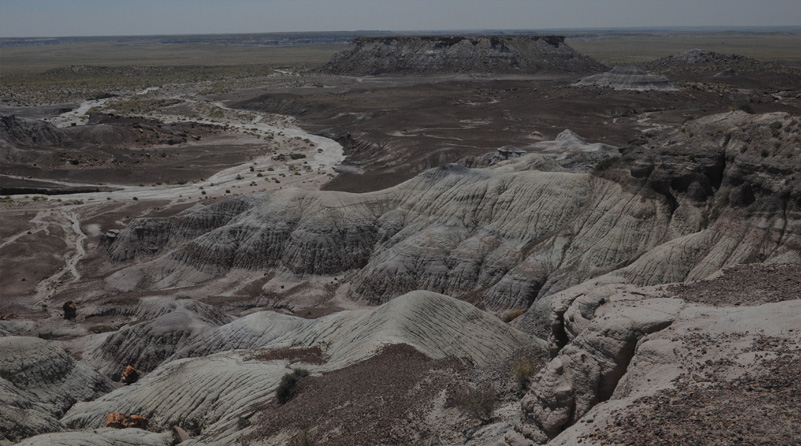
This is indeed a strange-looking place. Down between the strange humps at left are large petrified log sections that have tumbled down, and in the streambed in the distance there are more petrified log segments.
Large petrified logs portrude out of the earth at this point. | 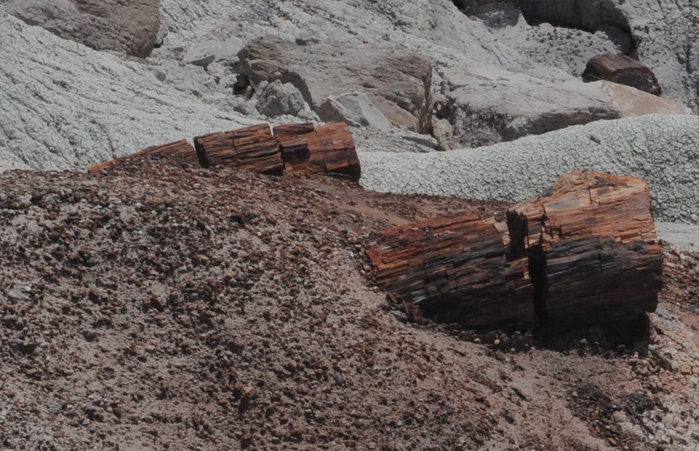 |
 | There is a large embedded petrified log at left, and numerous petrified log segments that have tumbled down the slopes. |
This large petrified log was buried near the road as we approached one of the loops. It looks like it is sawed off, but from the fact that the material of the log is some variety of quartz, it is clear that the log sections just cleave and fall off. | 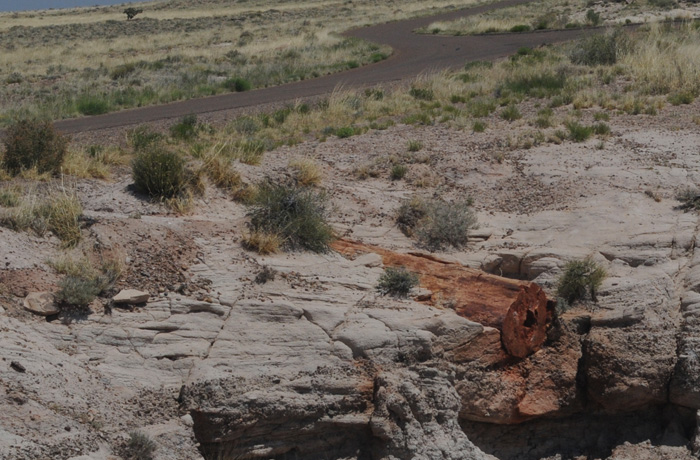 |
 | Note the large petrified log perched on the edge of the steep slope. Its future fate may be similar to the jumble of log fragments to the left of it. It was interesting to me to note that this was a unique area surrounded by a large grassy plain and distant hills. It also shows some of the subtle blue tint that gives Blue Mesa its name. |
This wide view shows the extensive system of low mounds with some of the blue color and stream beds around them. | 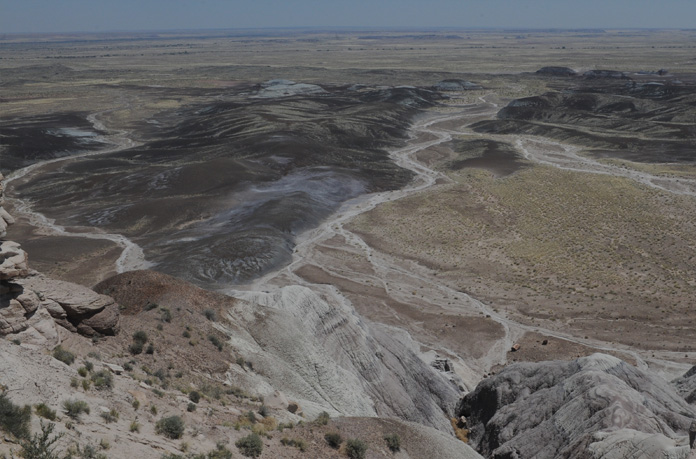 |
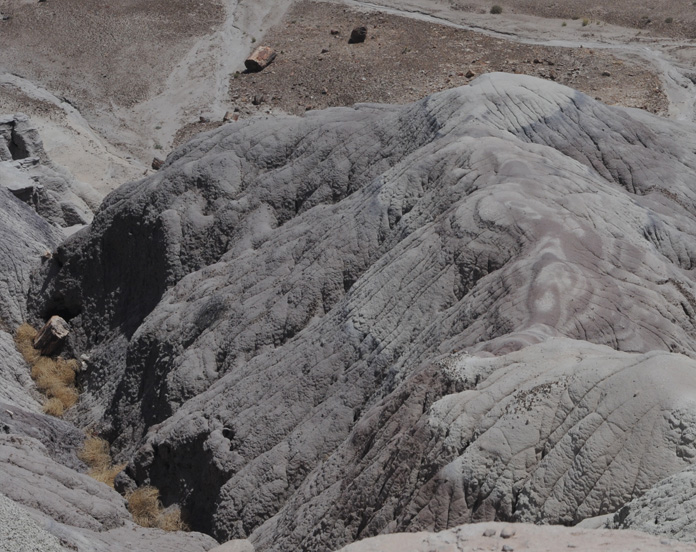 | This view of the nearby mound helps show the perspective of the size of the petrified log segments that have been unearthed and tumbled down the slopes. |
I was finding so many interesting things that I was behind the group on the trail as usual. But just about the time I thought I would catch up, they found something that gauranteed that I would be behind again.
The Green-Speckled Gully-Runner!
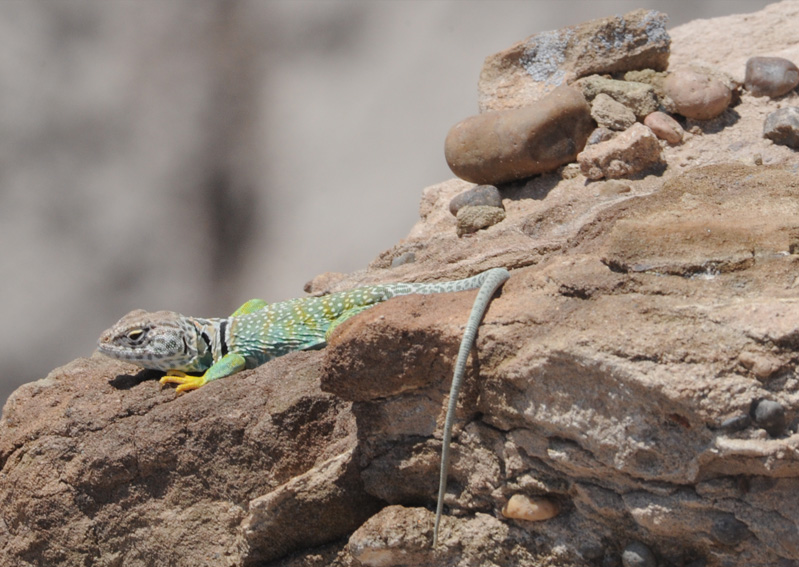
The green-speckled gully-runner is a legendary creature in our family. It was one of the most talked-about things of the 1982 trip by Mark and Jeff, who found it on one of their jaunts here. Brenda and I had never seen it, and had some suspicions that this animal might be imaginary, or at least greatly embellished in their tales. But here it was, big as life! Known to the uninitiated as the collared lizard, it is indeed a remarkable lizard. "Collared lizard" doesn't do it justice. It is indeed green and speckled, and "gully-runner" would also have to be considered as accurately descriptive.
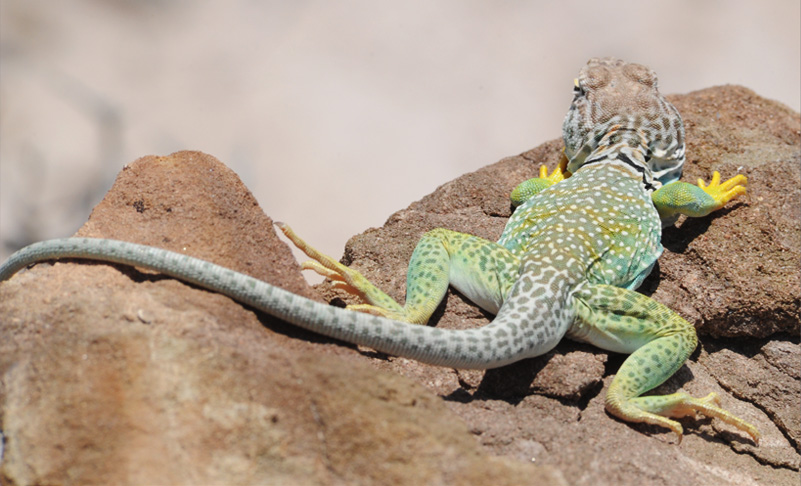
One would have to concede that the formal name of "Collared Lizard" for this creature has some rationale. It has a loose fold of skin on its neck before the speckles start in earnest. That loose fold does look like a collar. But it will always be "green-speckled gully-runner" to us. We had seen a very different lizard on the Bright Angel Trail that we might call the "skirted lizard". |  |
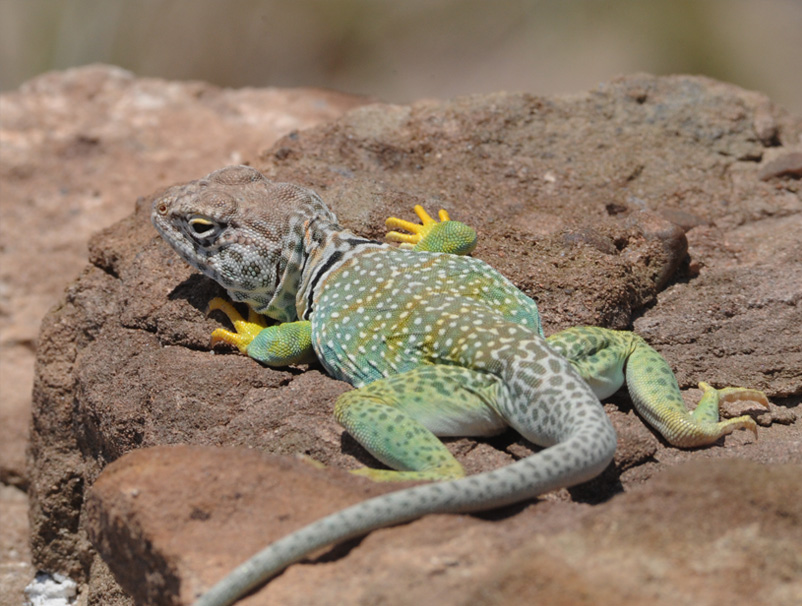
A fond farewell to a creature who can never again be accused of being imaginary.
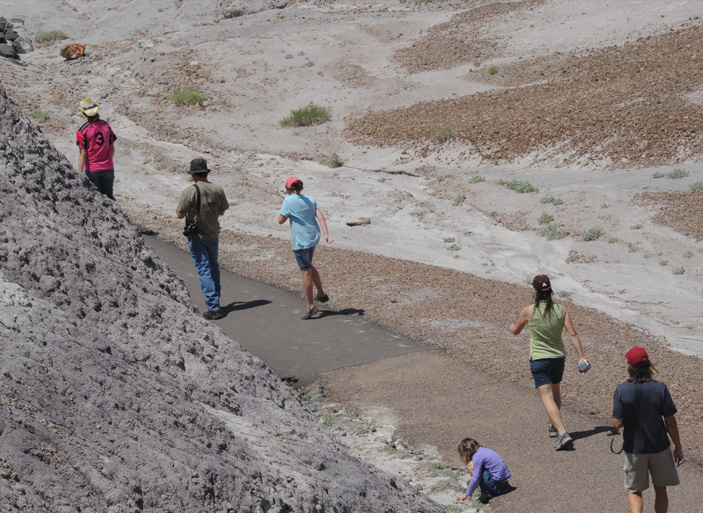 | The family had proceeded on down the trail so I was behind again. As I hurried to catch up, I was again distracted by my surroundings. We were now immersed in the bluish mounds. |
The material of the blue humps was very strange stuff with a very rough texture and networks of cracks. One of the informational panels referred to it as the "elephant skin" surface. The material is classified as mudstone or claystone. The general formations are called "badlands", indicating and arid region with infrequent but torrential rain. The soft rock funnels the water down rills and gullies, carrying loads of sediment away. The Bentonite clay of the formation can swell greatly when wet, and then shrink and crack as it dries. | 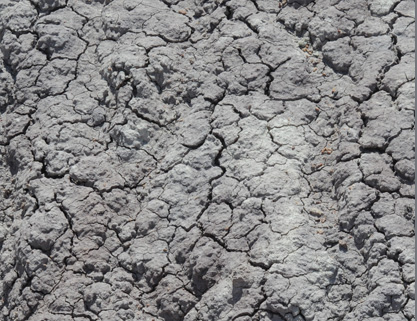 |

The trail had gone steeply downward so that we are among the towering mounds. The scale can be seen by the size of Jeff in the bottom left of the photo above. | 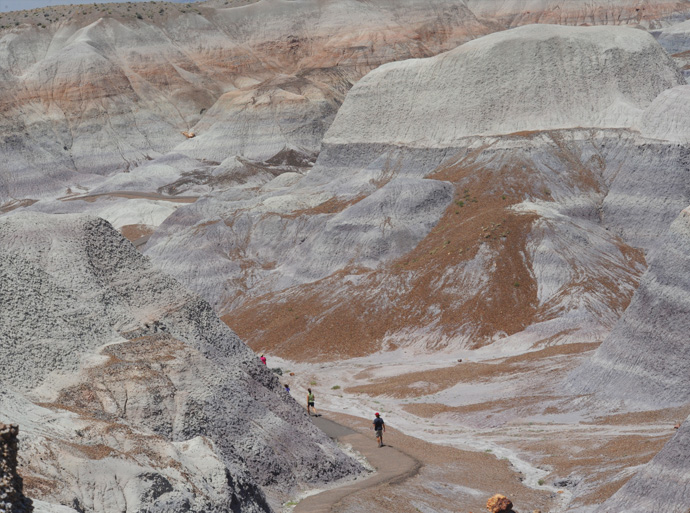 |

 | In the above view of the blue mesa formations you can see our trail at two places in the bottom of the photo. Jeff and Mark are proceeding into an area where there are more segments of petrified logs. |
The girls could now get a really close look at some of the petrified log segments out here on the trail. It was very nice to be able to walk among the petrified logs and be able to see them in their natural setting. | 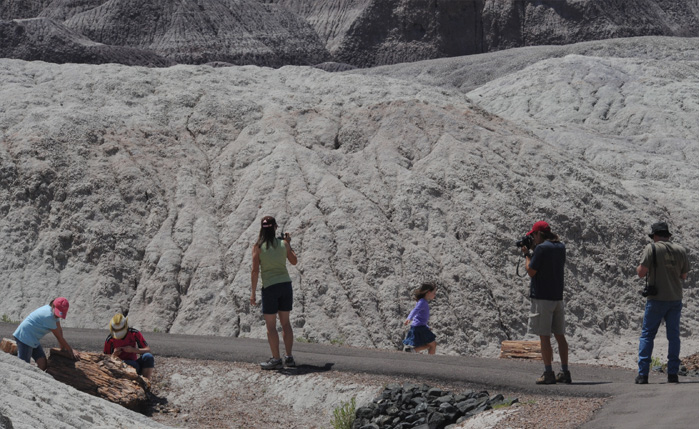 |

 | This part of the trail climbs back up so that we could see one of the road-level observation points above us. Then it went back down into the lower areas where we found more petrified logs. |

These were typical of the segments of petrified log that we found along the trail. |  |
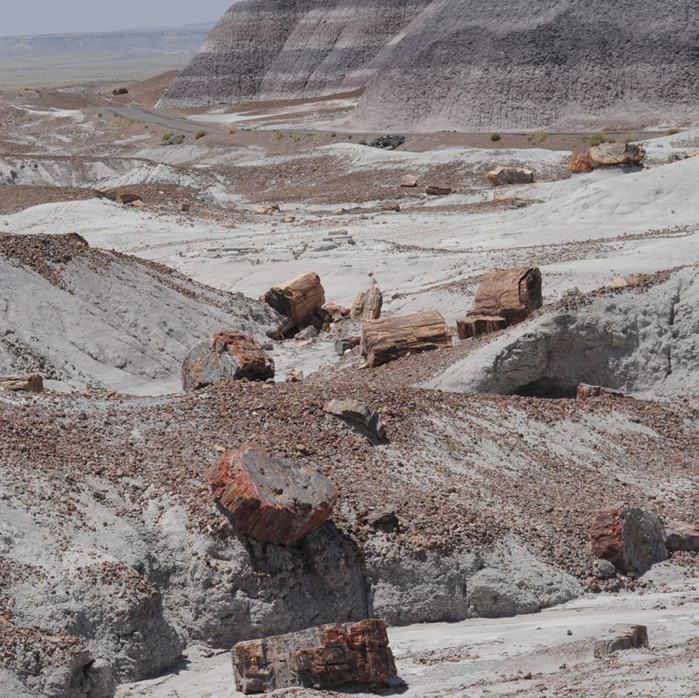 | The valley parts of the trail were strewn with petrified log segments. |
Certainly this petrified wood was not just hardened wood. It certainly looked plausible that this is a collection of various types of quartz from silicon dioxide penetrating the wood in water and gradually replacing the wood cells. | 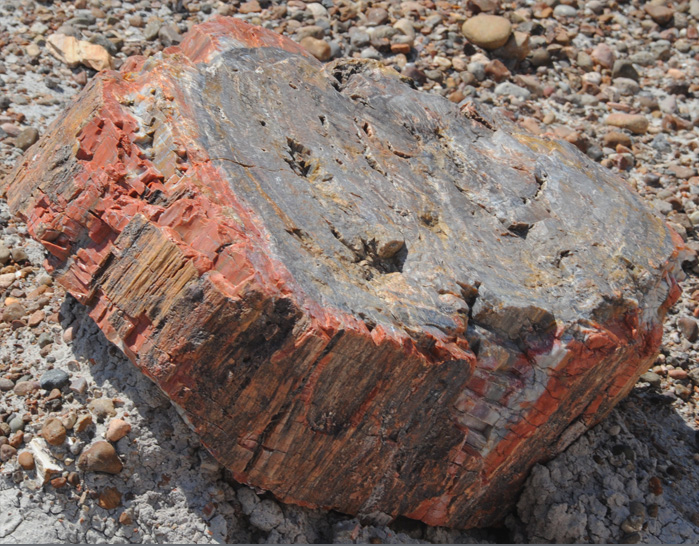 |
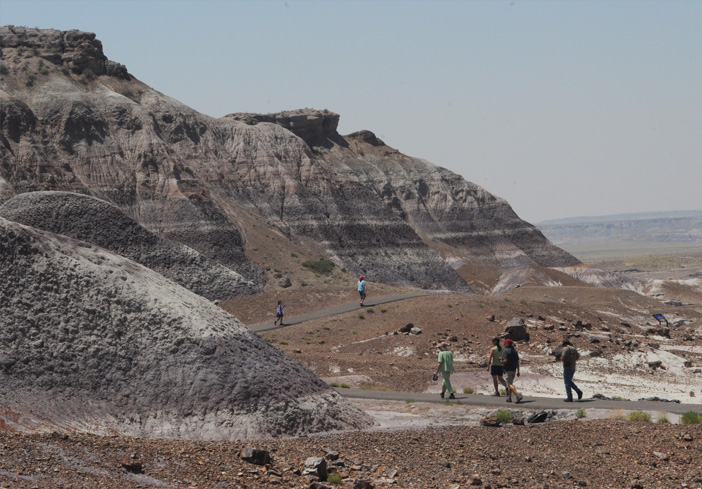 | We continue on the trail by regions like that below which looks like a large sand-painting. |

 |  |
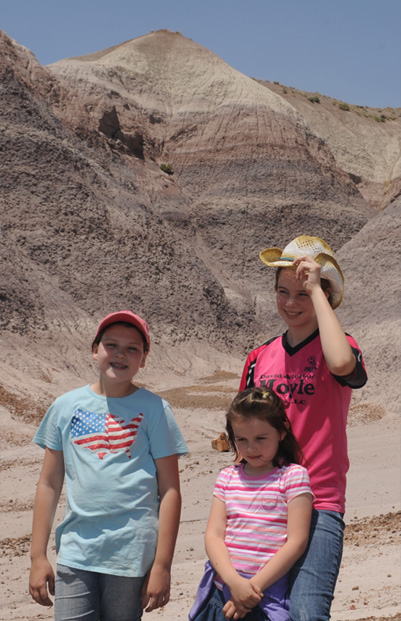 | 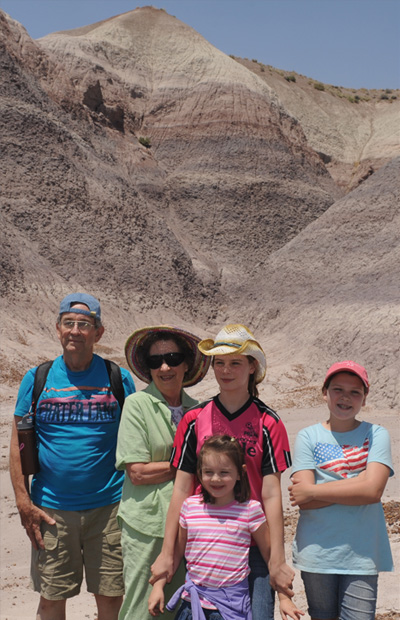 |
It's obviously more fun to run the trails than to pose for pictures, but the girls were very kind in letting us pin them down occasionally. They even submitted to having their picture taken with Grandma and Granddad.

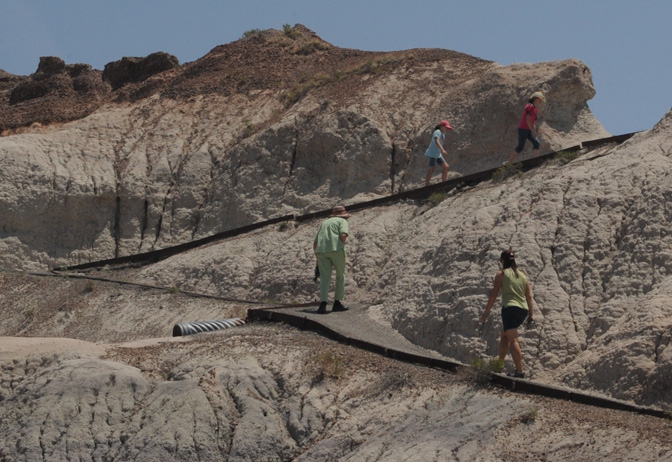 | Finally we wound our way out of the valley of the Blue Mesa area. It was certainly a remarkable hiking trail. |
| On to Agate Bridge |
2011